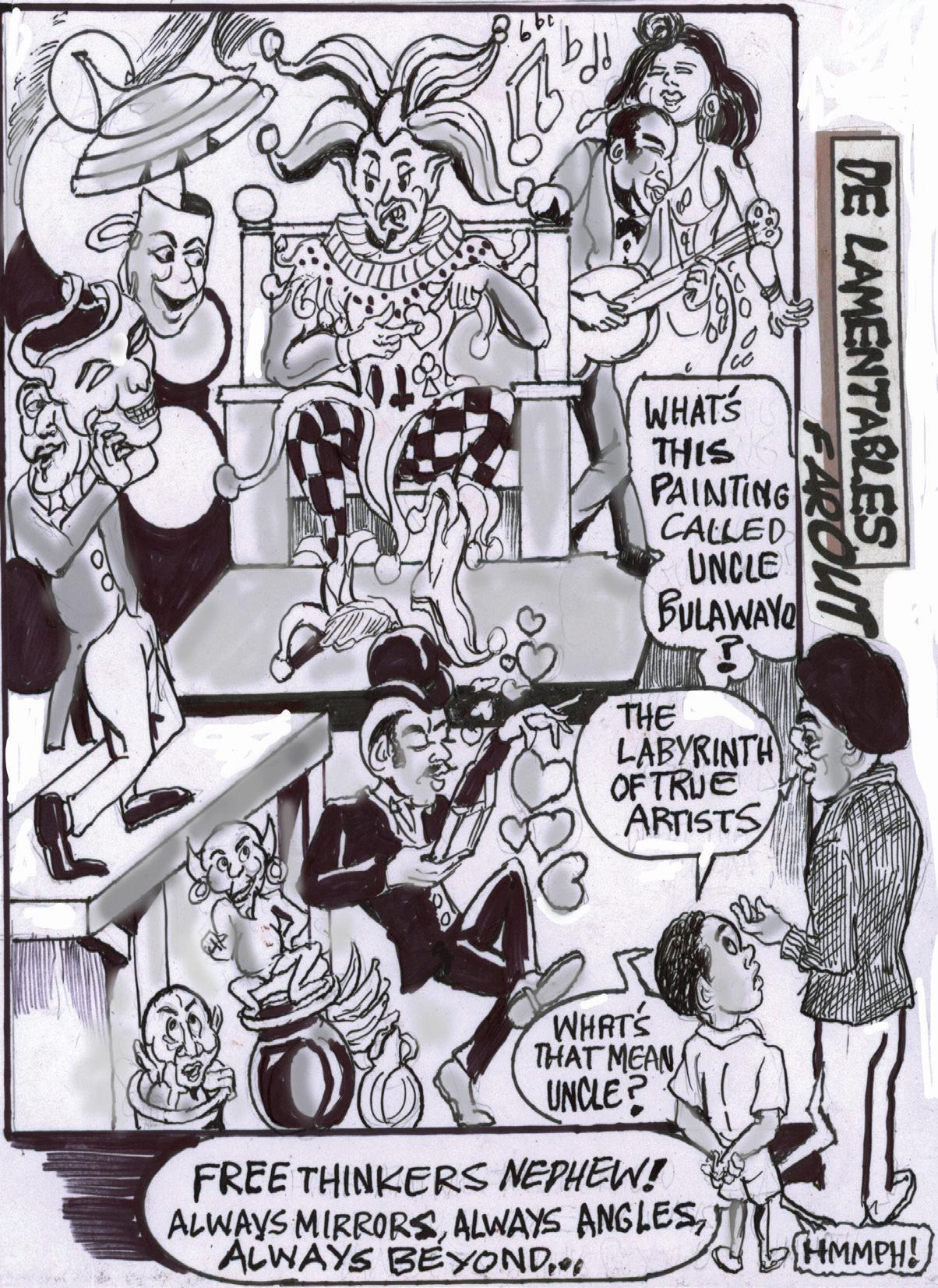
2 minute read
The Arts and their narrative have never been a challenge of mere simplicity
DEFINING the Arts in all their expressions, from its earliest recorded ages, have always transferred as storytelling records that allow us an insight into facts of life in that time. To belief and symbolic perceptions of its distinct age, some will remain a mystery, subject to our current imaginations, as have aspects of the Sahara rock drawings to the possibility of Alien visitors, etc. Throughout our recorded existence, whether with poetic heroic narratives, religious mythopoeia, love songs, poetry, ballad, or largerthan-life graphics on temple walls or columns, for those who have inherited those visuals and prose, we can choose to either empathise with or pity the humanity of that age, when we combine and interpret a time projection of their challenges, Guyana and its Arts are no different.
This article was prompted by an article published in Kaieteur news on April 9, 2023, titled “Art is much more than a reflection of reality” under the pseudonym of ‘Peeping Tom’. I honestly despise pseudonyms for hiding while at times casting clueless and venomous opinions. That article, however, painted a picture of one who has insights into the arts but has not relied on this talent exclusively to survive.
Advertisement

I think that artists should source it, even as I invite this person to come forward as a real person, thus, the narrative of the first paragraph. Every artist has a significant role to play, the portrait painter for this first reference. I designed the backdrops for the Spectrum Night club at Tower Hotel at the request of the late, then-owner Richard Humphrey. I composed the backdrop screens, but when the top musician portraits were to be done, I called in my buddy ‘Ward’, an expert portrait painter to do his thing and we got paid because the ideal then is in the client’s satisfaction.
Secondly, in the initial teenage era of walking and selling paintings, while then employed at GRB,
I wasn’t doing well until it was explained by Nunes and other peddling artists about the category of paintings that sold that were deemed ‘Co-op Bank paintings’. These were primarily interior river scenes with taunting sunsets or sunrises. “These accountants at the bank, can’t appreciate far out ideas banna, deh want a familiar interior landscape, cause de farest deh ever guh, is to the airport.” That was the concept that defined that landscape and artists have earned to live.
I can remember when I designed a graphic novel on the impact of drugs in underprivileged areas, with art to accompany the script, and photographs. I couldn’t get it published, no ads, not even from the people at the Ministry of Education. UNICEF was interested but got no cooperation. This was the mid-early 1990s. I gave a friend, a former joint service officer who worked at the US embassy, to explore publishing help from the embassy. My friend called me about a week later and said that his boss said that he didn’t know that there were people in Guyana who saw things that way. However, he didn’t help. But my friend’s boss did become very ‘infamous’ on his Guyana tour of duty. It is well understood that art is supposed to propose deeper conversations, but with whom, about what, and at what cost? Nevertheless, some of us will pursue that philosophical passion, but an observer must carefully explore before such an analytical view can be shelved to posterity with honesty.
The ‘incognito pen’ then described the theatre as “The new label is popular theatre, where the audience goes to and does laugh at even tragedy.











